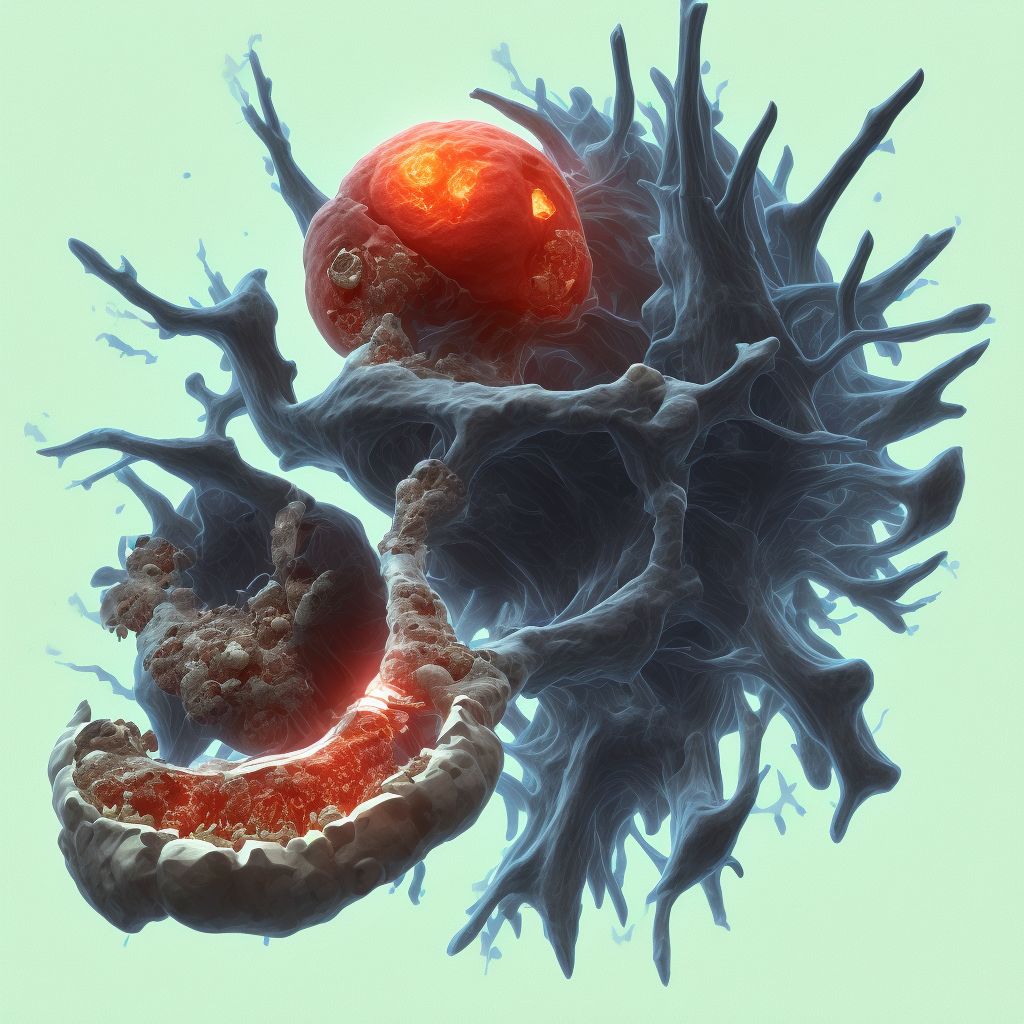
Nondisplaced fracture of medial condyle of right tibia, subsequent encounter for open fracture type I or II with malunion Save
ICD-10 code: S82.134Q
Disease category: S82.134: Nondisplaced fracture of medial condyle of right tibia
Nondisplaced Fracture of Medial Condyle of Right Tibia: Understanding Open Fracture Type I or II with Malunion
A nondisplaced fracture of the medial condyle of the right tibia refers to a specific type of fracture where the bone is broken but remains aligned. This article focuses on subsequent encounters for open fracture type I or II with malunion, excluding treatment options.
When a fracture is described as "open," it means that the broken bone has punctured through the skin, leading to an increased risk of infection. Open fractures are categorized into different types based on the severity of soft tissue damage and the extent of the injury.
- Open Fracture Type I: In this type, the wound is small, typically less than 1 cm in length. There is minimal soft tissue damage, and the bone fragments are usually clean.
- Open Fracture Type II: Type II fractures have a larger wound, often greater than 1 cm. The surrounding soft tissues may be moderately damaged, and there may be some contamination present.
Malunion refers to the improper healing of a fractured bone, resulting in misalignment or deformity. In the case of subsequent encounters for open fractures type I or II with malunion, medical professionals provide ongoing care and monitoring to ensure proper healing and address any complications that may arise.
During subsequent encounters, healthcare providers may conduct various examinations, such as physical examinations, imaging studies, and laboratory tests, to assess the progress of bone healing, monitor infection risks, and identify any associated complications.
It is crucial for patients with a nondisplaced fracture of the medial condyle of the right tibia, subsequent encounter for open fracture type I or II with malunion, to follow the instructions and recommendations provided by their healthcare team. Compliance with prescribed treatments, such as immobilization, weight-bearing restrictions, and medication, is essential for optimal healing and to minimize the risk of further complications.
In conclusion, a nondisplaced fracture of the medial condyle of the right tibia can result in subsequent encounters for open fracture type I or II with malunion. These encounters involve ongoing monitoring and care to ensure proper healing and address any complications that may arise. If you have any concerns or questions about your specific condition, consult with a healthcare professional for personalized advice.
Treatment of Nondisplaced fracture of medial condyle of right tibia, subsequent encounter for open fracture type I or II with malunion:
Treatment Options for Nondisplaced Fracture of Medial Condyle of Right Tibia with Malunion
When it comes to the treatment of a nondisplaced fracture of the medial condyle of the right tibia with malunion, several options can be considered based on the severity of the condition and the patient's specific needs. Here are some commonly recommended treatment options: